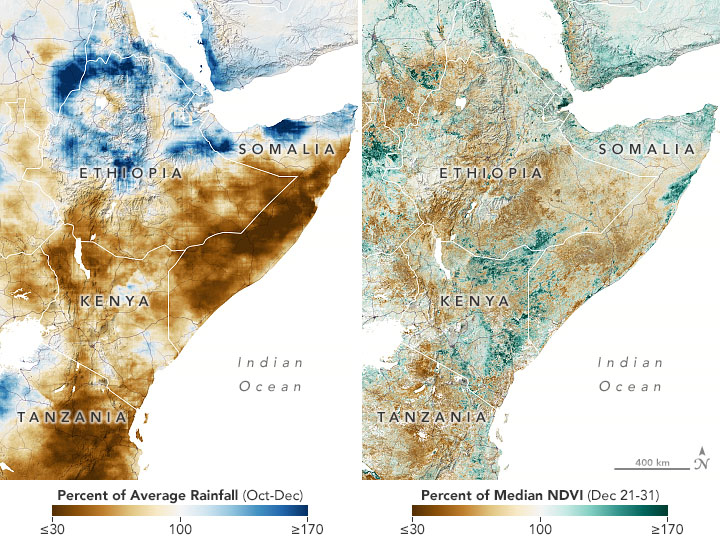Gepubliceerd op 8 januari 2022
Following three consecutive failed rainy seasons, more than 20 million people in eastern Africa now face some of the worst food security risks in 35 years. Climate and agriculture experts are advising governments and relief agencies to expect a significant need for food assistance in Somalia, Kenya, and Ethiopia. Climate change and ongoing La Niña conditions in the Pacific Ocean, half a world away, have contributed to the persistent dry weather and might bring more of it during the next rainy season.
The warnings come from the Famine Early Warning Systems Network (FEWS NET), a program supported by the U.S. Agency for International Development (USAID). FEWS NET assembles global and regional analyses of food security (particularly conditions for farming and livestock husbandry) to help governments and relief agencies plan for and respond to humanitarian crises. Several U.S agencies support FEWS NET; NASA provides satellite imagery and climate and weather data.

Click here to view the image at full resolution.
Tropical countries within the Horn of Africa tend to have two rainy seasons: the gu in March, April, and May, and the deyr in October, November, and December. The 2020 and 2021 deyr seasons were both substantially drier than normal, and the 2021 gu also came up short. Levels of precipitation have been the lowest on record in some areas; the Shabelle-Juba river basins have seen their lowest rainfall totals since 1981. Kenya and Somalia have declared drought emergencies; similar conditions have also prevailed in southern and eastern Ethiopia.